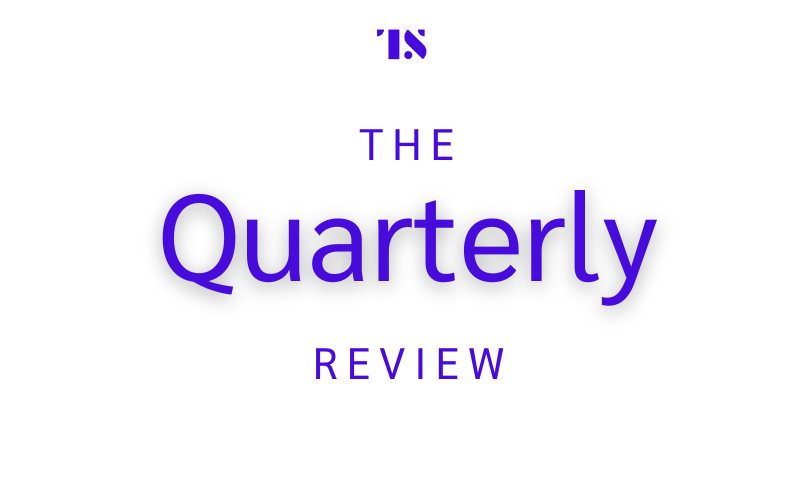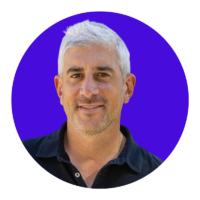The Quarterly Review: The future of portfolio management and AI assistants ft. Public’s Leif Abraham
- Leif Abraham, co-CEO and co-founder of Public dives into how the firm is planning on adapting to changing investor sentiments and behaviors.
- Currently Abraham is busy integrating the firm's AI assistant into their investment flow and building new products that better cater to modern portfolios.

Notes from the desk: Welcome to this month’s Quarterly Review, a series where I dive into what executives from some of the best brands in financial services are focusing on in this quarter, as well as how they are planning to achieve their goals. It’s a chance for the industry to learn about what goes on behind an FI’s four walls and how leadership manages their priorities.
But that’s not all: a review implies no mandates, a check in. So stay tuned next quarter to learn whether the executive achieves his plans and translates theory into reality.

In this edition we focus on Leif Abraham, co-CEO and co-founder of Public.
This quarter for Abraham is all about reacting to change. He anticipates that this younger generation of investors is going to change the landscape of portfolio management, relying less on the human touch and more on AI guided strategies. This prediction is driving Public’s work in tying its AI assistant, Alpha, to its investment flow.
Alpha is already capable of handling investment related queries, providing summaries of earning calls, and screening for bonds that fit a customer’s investment criteria. But Public wants this assistant to go the extra mile and take action.
Abraham dives into what this integration will require, how the company is evolving its product mix to meet the needs of this new age of investors, and what challenges it foresees as it moves forward with the AI assistant integration.
The focus: “Guided” portfolios and integrating an AI assistant into the investment flow
Abraham: We were the first to launch fractional stocks, and have since fractionalized every asset class we’ve launched, from stocks, to alternatives, and now corporate and treasury bonds. Public is now the only place where you can invest in all these asset classes in the same place – fractionally. Our goal this quarter is to use the technology we’ve built to launch new, innovative investment products and account types. The launch of fractional bonds was an important step towards this and we will launch more products on the back of this.
This generation of investors is self-directed first. As they grow their wealth, only parts of their portfolio will be managed. We expect that these managed products will look more like “guided products”, where the investor decides themselves which strategy to pursue, with help from the platform and AI. Once they have initiated a strategy, it will run autonomously from there. Hence it starts guided and ends up being managed.
For Public, this means we can be truly a place where one manages their entire portfolio. They run parts of their portfolio entirely themselves and parts are run on their behalf — all in the same place.
Plan of action
Public is in a unique position due to the technology we’ve built over the years. We have essentially completed the baseline of what a fractional, multi-asset investment platform looks like, and next we will expand from that baseline to combine our fractional engine with our AI assistant Alpha to bring these new products to market.
Our fractional engine makes it possible to invest fractionally into all asset classes on Public. Many assets can have high minimums, sometimes in the thousands of dollars. Our fractional engine makes it possible to invest in stocks, ETFs, corporate bonds, treasuries, crypto, and alternative assets with funds as little as $100. This has the effect that people can manage their portfolio allocation easier, using dollar amounts, not number of shares.
- New product development: The first challenge is to create new financial products using the fractional engine and ensuring these are simple enough for people to understand what assets are “under the hood”. This is truly the first step. A big part of that is ensuring people can easily buy and sell these products, without locking up their money. Bonds can be tricky to sell sometimes if the bonds trades are down. How we handle these situations is crucial in order to make the products feel simple and easy to manage and understand.
- Integrating the AI assistant in the investment experience: Currently Alpha, our AI assistant, is solely used to provide insights into the markets, public companies, and other assets. In the future, Alpha will expand to help people manage their portfolio. Moving Alpha from an assistant that gives context and information, to an assistant that can take action. This next phase is about integrating Alpha into that experience. Alpha taking an action on someone’s portfolio, is not just a technical challenge, but also one that involves compliance. Depending on how much Alpha acts on someone’s orders or its own, creates a question around whether Alpha itself has become a financial advisor or is simply a tool that executes orders from the user.



